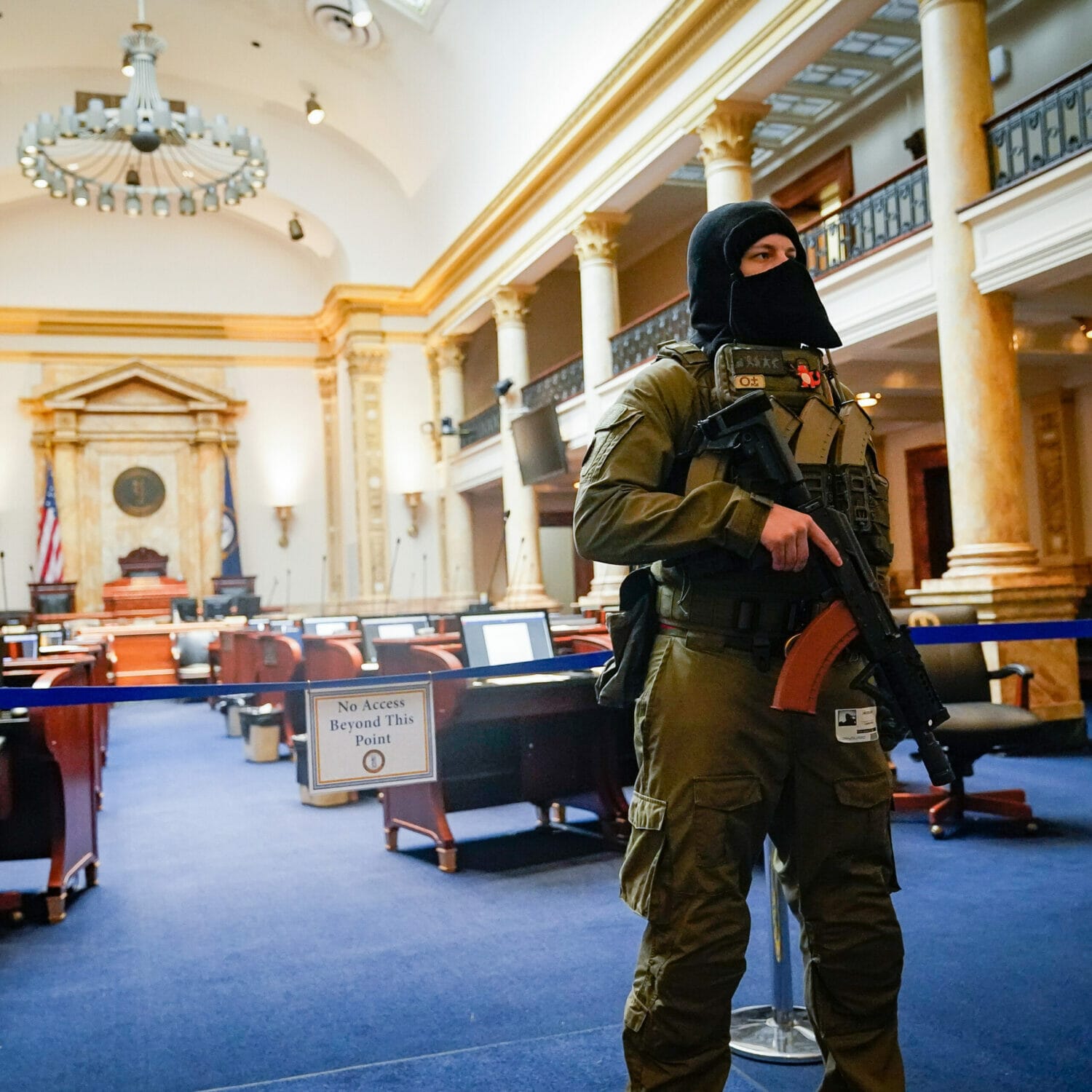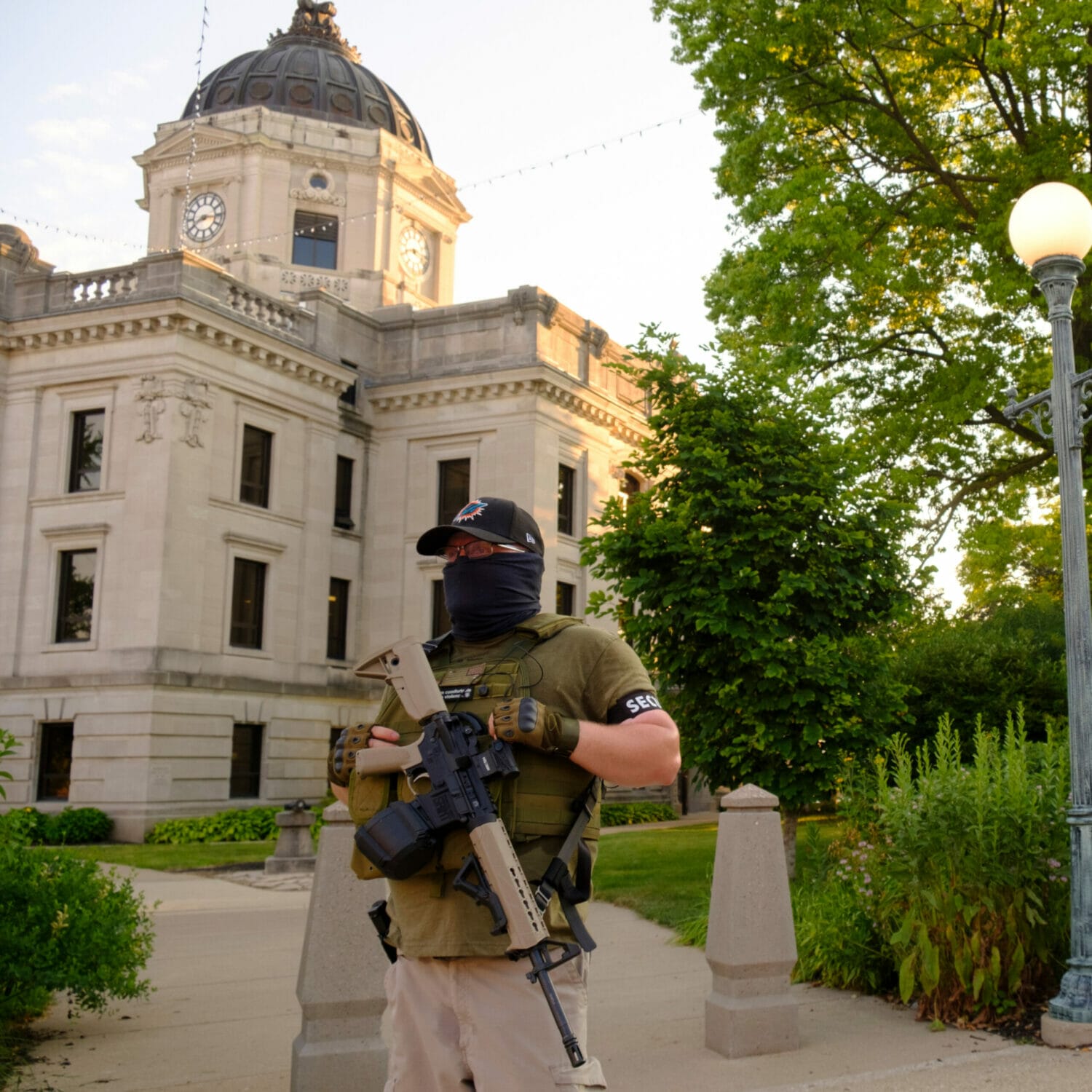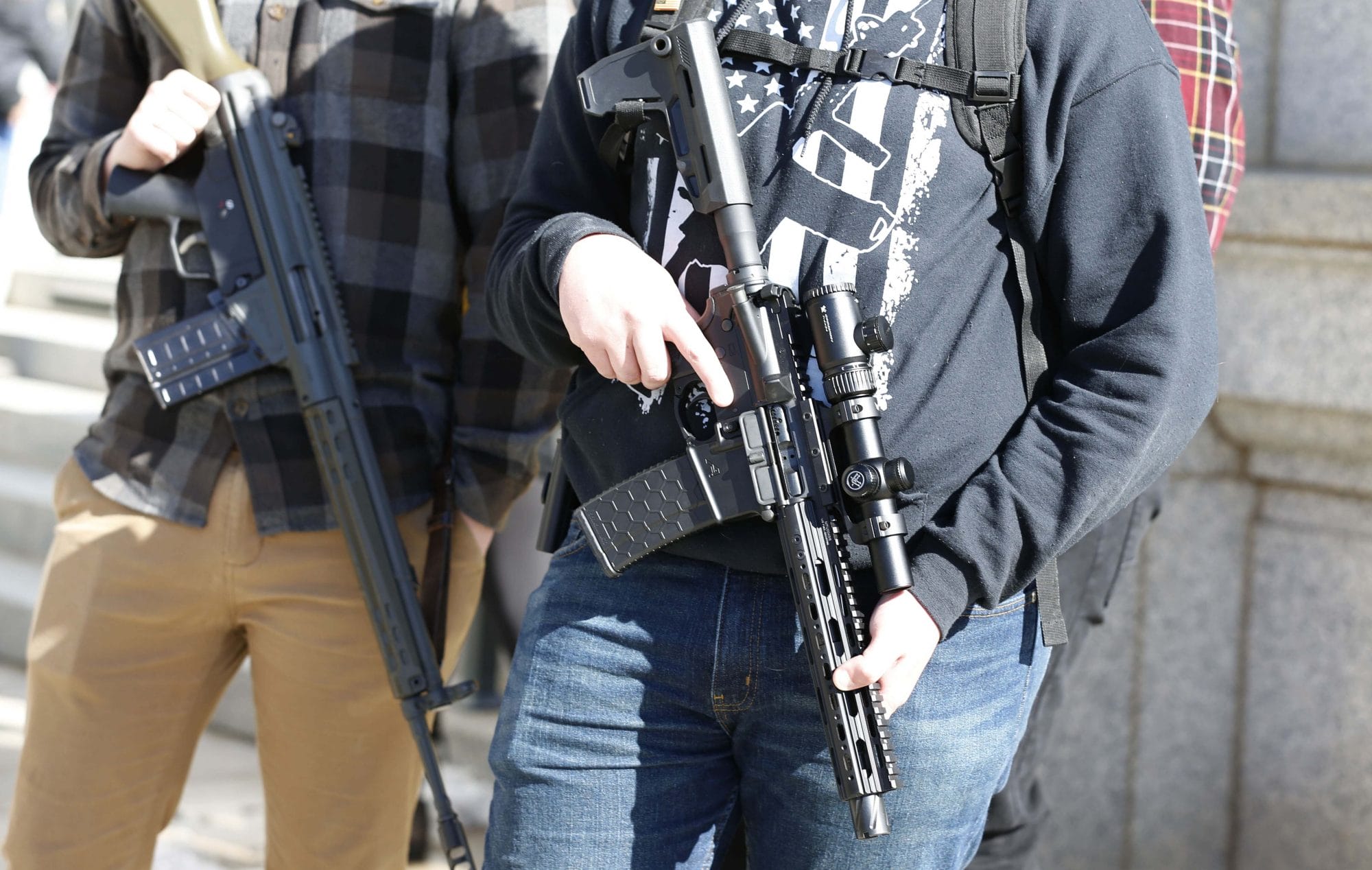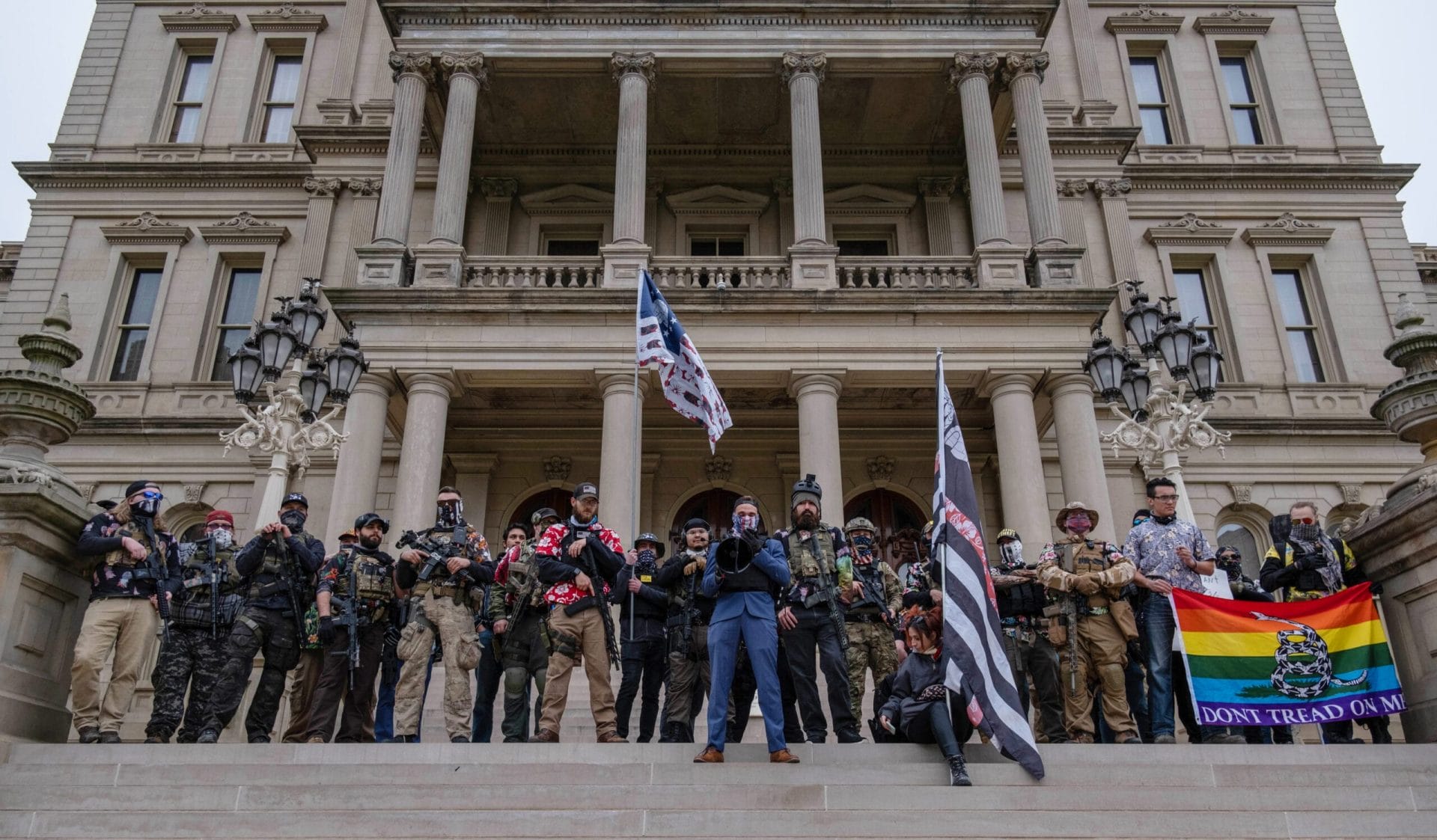
The use of guns to intimidate and threaten voters, elected officials, and peaceful demonstrators poses a serious threat to our democracy.
The attack on the US Capitol on January 6, 2021, was a watershed moment in American history, revealing the extent to which some are willing to go to undermine democratic processes and advance their political objectives. But the insurrection didn’t come out of nowhere—the signs of rising political violence across America are evident.
In recent years, America has witnessed several high-profile political shootings that underscore this disturbing trend. In 2011, Congresswoman Gabby Giffords was shot in her district while hosting a constituent event. Six years later, Congressman Steve Scalise was shot during practice for the annual Congressional Baseball Game. In 2020, members of a far-right militia group conspired to kidnap Governor Gretchen Whitmer. Most recently, in 2024, former President Donald Trump narrowly escaped an assassination attempt during a campaign rally.
American exceptionalism—the notion that our unique political system has enabled unparalleled prosperity—has endured for nearly 250 years. However, this exceptionalism has now been overshadowed by a different form: an epidemic of gun violence and extremist gun culture unrivaled in peer nations.
For years, there has been a proliferation of incidents involving people using guns to harass and intimidate Americans involved in our democratic processes, including elected officials, school board members, voters, and election workers. It’s not uncommon to read stories about people staking out or patrolling near voting polls on Election Day, armed to the teeth and dressed for war.
The Second Amendment does not sanction insurrection. When a person carrying a gun uses it to intimidate someone, they infringe on that person’s First Amendment rights. Gun safety laws are crucial to maintaining a safe and free democracy, ensuring that the Second Amendment does not overshadow other constitutional rights.
Our Guns & Democracy project highlights the risks and tragic outcomes when rights are not balanced by responsibilities. It also directs legislators and the public toward policy solutions that will help strengthen our democratic institutions rather than weaken them.
MEDIA REQUESTS
Our experts can speak to the full spectrum of gun violence prevention issues. Have a question? Email us at media@giffords.org.
Contact
The rise of armed extremism and intimidation poses a significant threat to American democracy. In recent years, extremist groups have gained notoriety for their violent rhetoric and actions in a growing number of public spaces. Examples include:
- In October 2020, members of the Boogaloo Bois, a far-right extremist group that advocates for a second American Civil War and is known for its anti-government and pro-gun stance, were charged with attempting to incite violence during Black Lives Matter protests in Las Vegas.
- In October 2022, armed vigilantes in Maricopa County, Arizona, patrolled ballot drop boxes, further intimidating voters by taking photos and videos.
- Across the country, armed extremists have increasingly targeted drag events and LGBTQ+ gatherings.
These incidents illustrate a broader trend where extremists use firearms to threaten and harass individuals exercising their constitutionally protected rights. The January 6 insurrection, where extremist groups violently stormed the US Capitol to overturn election results, is a stark example of how extremist rhetoric and armed intimidation can threaten the very foundations of democracy. Politicians’ calls to action and reliance on extremist rhetoric have further emboldened these groups, escalating the threat to democratic participation.
Greater numbers of guns in public, more gun violence, and growing extremism threaten participation in all facets of our democratic process: at legislative hearings, school board meetings, demonstrations, rallies, the voting booth, and in vote tabulation centers.
In advance of the 2024 elections, and with some candidates for office increasingly utilizing violent rhetoric to whip up support among extremists, there is a greater need for legal protections of our democratic rights. In September 2022, GIFFORDS Law Center released a report detailing the rising threat of armed intimidation in this country and offering several specific policy recommendations, including:
- Prohibiting open carry (either broadly or in areas specific to the exercise of democratic rights, like polling places).
- Repealing preemption laws that limit the ability of local governments to regulate firearms.
- Enacting laws to make it a crime to threaten or intimidate an election official.
These measures are crucial for ensuring that all Americans can exercise their rights without the threat of violence and intimidation. The ongoing trend of armed extremism must be addressed to protect the integrity of our democratic process.
OUR STORIES
We’re youth activists, survivors, doctors, and gun owners. We’re united in the fight to end gun violence.
Read More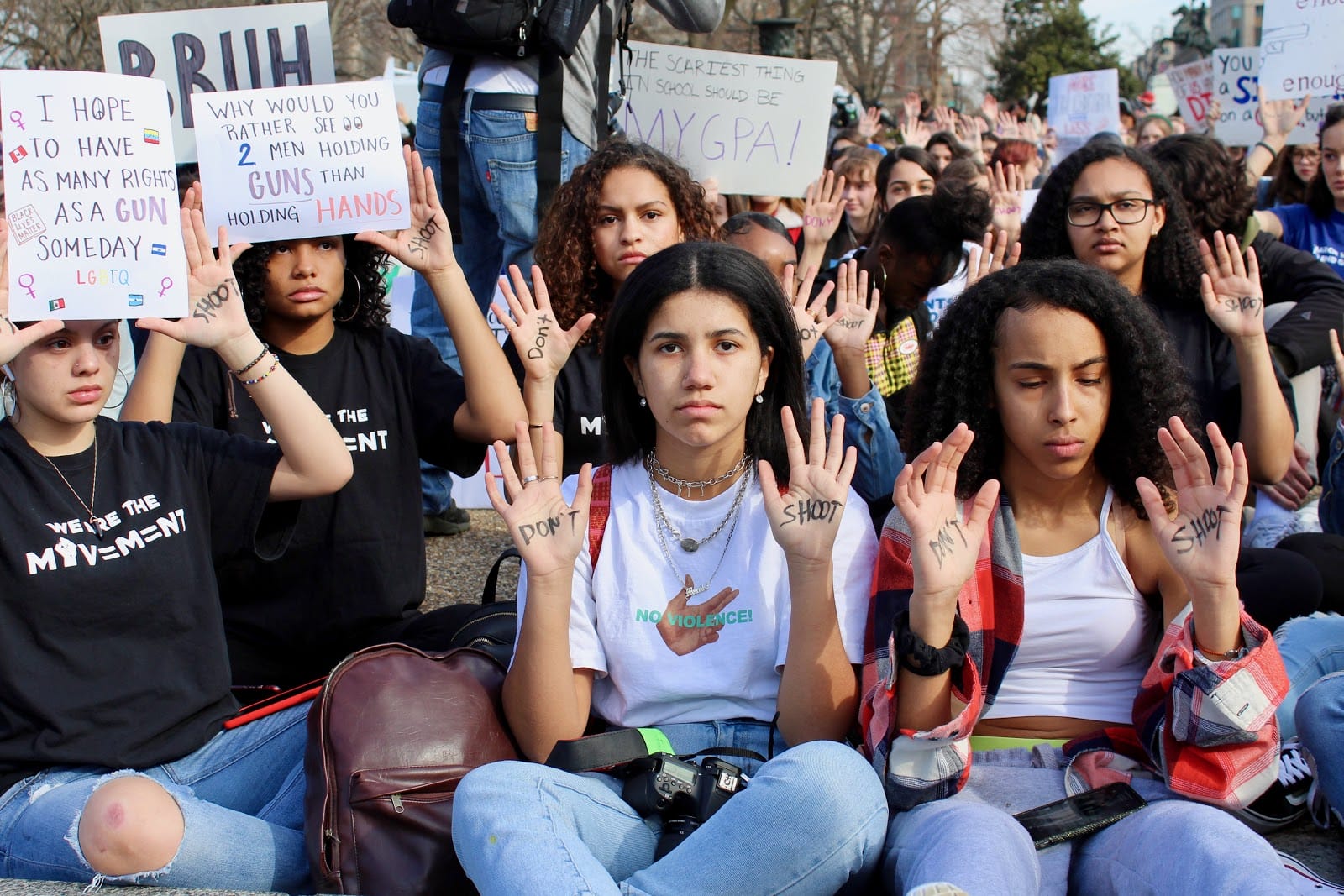
Election workers and voters today must contend with intensified scrutiny, which in part has been fueled by a rising tide of unfounded fraud accusations and extremist rhetoric predominantly propelled by right-wing factions, the gun lobby, and political figures. At the same time, unprecedented gun sales and the rollback of state legal protections have left voters and election officials more vulnerable than ever before to the threat of gun violence.
The Supreme Court’s 2022 ruling in New York State Rifle & Pistol Association, Inc. v. Bruen exacerbated this issue while marking a dangerous shift in the Court’s approach to the Second Amendment. This ruling, which forced states with some of the nation’s strongest concealed carry laws to weaken their restrictions, has spearheaded a tidal wave of subsequent state deregulation while also casting a shadow of legal uncertainty for those seeking stronger gun regulation. This toxic combination has rendered states unable to adequately protect voters, election workers, and the election system itself.
The attempted assassination of former President Donald Trump on July 13, 2024 can be viewed as a natural consequence of escalating armed political violence in the United States. This incident highlights the dangerous interplay between political extremism and widespread gun accessibility, further amplifying the threats faced by both public figures and ordinary citizens involved in the electoral process.
With more guns and increased political polarization and violence, states require strong laws to mitigate these risks. Despite the challenges posed by Bruen, the Supreme Court expressly recognized that prohibitions on guns in “sensitive places”—including “polling places”—were “presumptively lawful,” meaning regulations of firearms in polling places are amongst the most legally secure laws states can pass today. Yet, as of April 2024, only 13 states and Washington DC prohibit both open and concealed carry at the polls.
In 2023, GIFFORDS Law Center and the Brennan Center for Justice partnered to release a new report,Guns and Voting. This report evaluated the specific risk that gun violence poses for US elections and proposed policy solutions to mitigate those risks. Solutions include prohibitions on firearms wherever voting or election administration occurs—at or near polling places, ballot drop boxes, election offices, and ballot counting facilities. In addition, states need stronger laws preventing intimidation of voters, election officials, election workers, and anyone else facilitating voting, with express recognition of the role that guns play in intimidation.
In a country that’s experiencing widespread gun deregulation, expanded Second Amendment rights, a rising surplus of guns, and an assassination attempt against a former president, armed violence in our election spaces is no longer a mere risk, it is a dangerous political reality. With no federal law prohibiting firearms at polling locations, it’s crucial for states to act.
SUPPORT GIFFORDS
We’re in this together. To build a safer America—one where children and parents in every neighborhood can learn, play, work, and worship without fear of gun violence—we need you standing beside us in this fight.

Since 2020, incidents targeting the integrity of the electoral process have underscored new threats against election workers and voters, emphasizing the need for robust measures to safeguard democracy. The following are just a few examples of this threat:
- Maricopa County, Arizona: Voters using drop boxes in Maricopa County were confronted by a group of armed citizens dressed in tactical gear purportedly surveilling ballot drop boxes to root out voter fraud. Despite multiple complaints, law enforcement determined no state laws were broken since the civilians stayed beyond the state mandated 75-foot perimeter. Restrictions on this group’s surveillance were only possible after a lawsuit was filed under the federal Voting Rights Act.
- Michigan: Michigan Secretary of State Jocelyn Benson faced a distressing incident when dozens of armed protestors gathered outside her home “shouting obscenities and chanting into bullhorns in the dark of night.” The protesters arrived just after Benson and her four-year-old son finished decorating for Christmas and were about to watch a holiday movie.
- Shasta County, California: Since 2020, election officials in Shasta County have encountered rising threats and intimidation from protestors exhibiting violent behavior. These individuals have crowded election workers, bombarded election offices with excessive requests, and falsely presented themselves as an “official taskforce” when visiting voters’ homes.
As part of the Guns and Voting report, Giffords and the Brennan Center developed a model policy to address these issues. Referred to as the PEACE Act, this model law aims to combat election intimidation posed by the use or carrying of firearms at or near voting sites. The model replicates provisions from Section 11 of the federal Voting Rights Act and extends anti-intimidation protections to voters and election officials engaged in various electoral activities.
Drawing from the experience of Michigan Secretary of State Jocelyn Benson, who had no direct legal recourse after she experienced threats at her own home, the PEACE Act also extends protections to those who face intimidation due simply to their past or present involvement in the administration of elections.
In addition to state attorneys general, the PEACE Act empowers voters and election workers to pursue legal recourse and seek prospective relief to prevent future intimidation. In such suits, the model establishes a rebuttable presumption of intimidation for individuals carrying firearms while interacting with or observing protected electoral activities.
In 2024, California became the first state to introduce the PEACE Act through Assemblymember Marc Berman in AB 2642. While carrying a gun at the polls is already a crime in California, the bill enhances enforcement by incorporating federal safeguards into state law and empowering those who experience armed intimidation in these spaces to seek relief.
Colorado followed California’s example in 2025 with the enactment of CO HB 1225. Introduction of the PEACE Act positions California and Colorado at the forefront of election protection while setting a crucial example for other states to follow in safeguarding the integrity of their electoral processes.

GUNS & DEMOCRACY
RESOURCES
The Role of
the NRA
The NRA’s fear-based worldview depicts enemies lurking in every corner. Everyday citizens should not take the law into their own hands, threatening our democracy to protect it from imagined enemies.
READ MORERising Political Violence
Our democracy can’t function if Americans are threatened with armed violence. Policymakers must take steps to address our concurrent crises of gun violence and a democracy under threat.
READ MOREdangerous Rhetoric
Language that incites violence or fans the flames of hate should not be left unchecked, especially when it comes from our elected officials. We must hold those urging violence to account.
READ MOREGuns & Voting
Voting and elections have become the targets of threats and intimidation. To ensure that elections remain peaceful, states must ban guns at places where votes are cast and counted and enact stronger anti-intimidation laws.
READ MOREProtecting democracy
Americans may be subject to armed intimidation at the polls, scared into not participating in the election, or the target of political violence. But states can fight back with strong gun laws.
READ MOREOnline Threats & Extremism
Our memo details how conversations on social media platforms, often led by gun extremists, laid the foundation for the assault on the United States Capitol on January 6.
READ MORE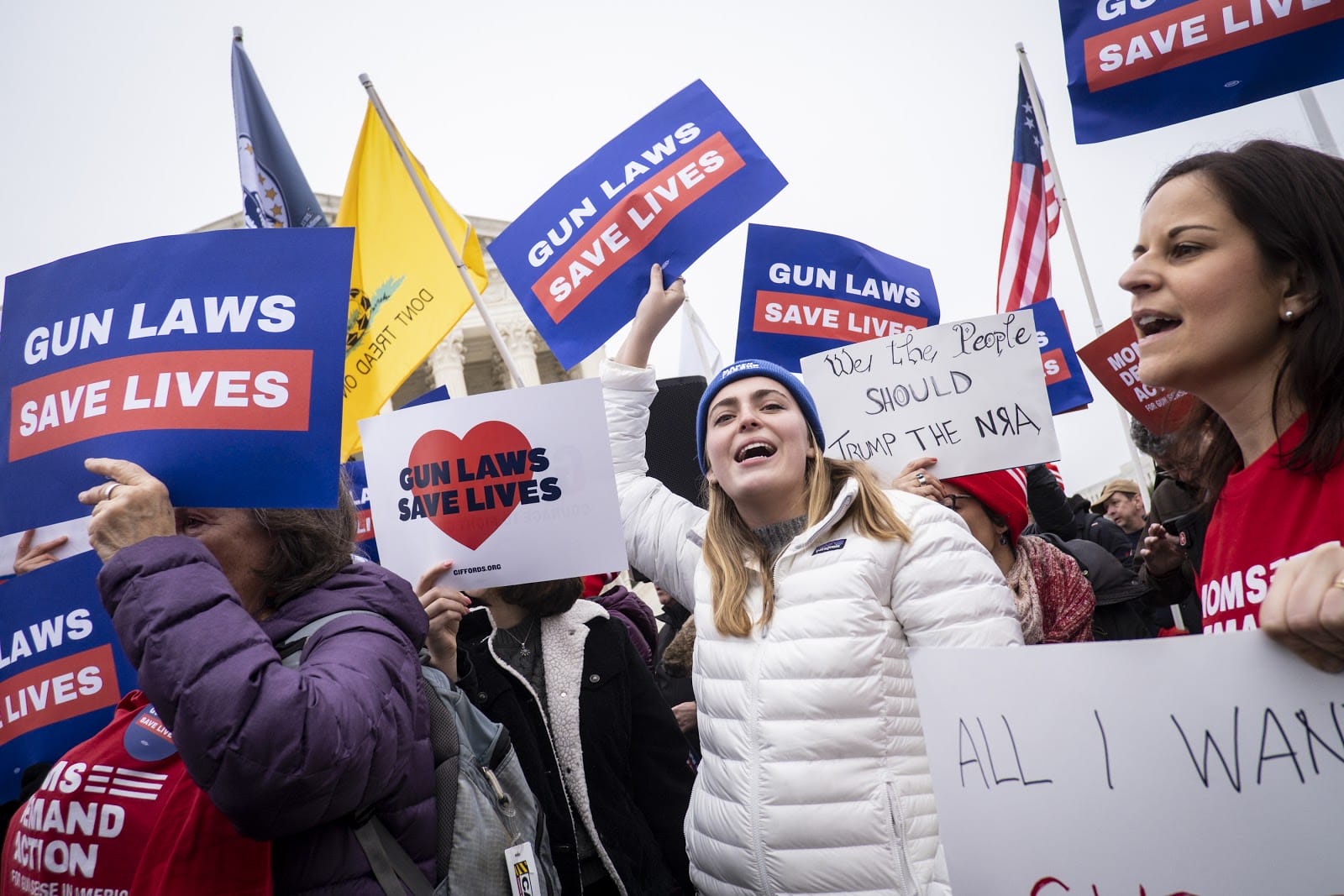
JOIN THE FIGHT
Over 40,000 Americans lose their lives to gun violence every year. In communities, courts, and ballot boxes nationwide, Giffords fights to save lives from gun violence. Will you join us?
